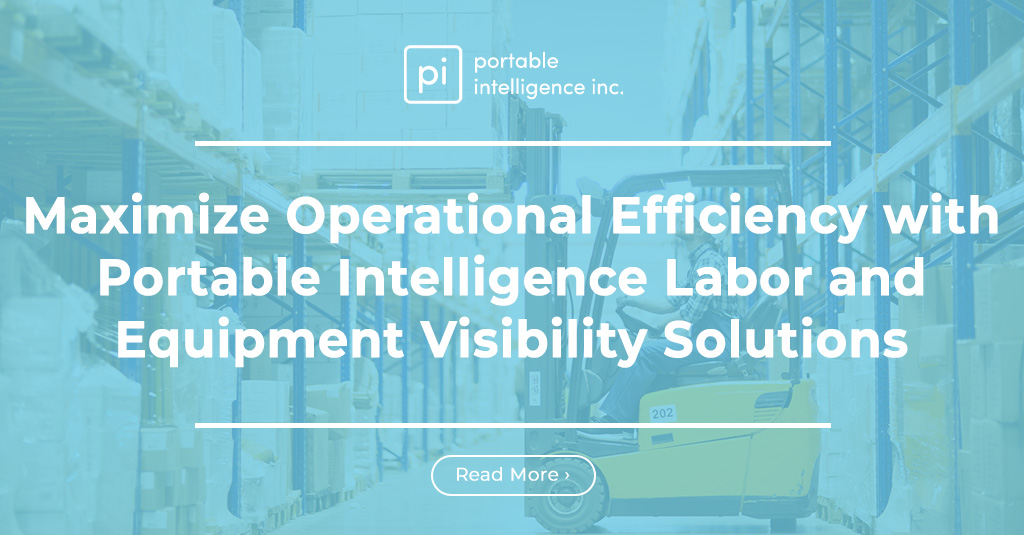Traditional inventory management systems often struggled to keep up with the demands of modern businesses. Manual tracking and forecasting were time-consuming, prone to errors, and lacked real-time visibility. This led to issues such as stockouts, overstocking, and increased operational costs, hindering the growth of enterprises. However, with the advent of technology, businesses now have the opportunity to revolutionize their inventory management practices and gain a competitive edge.
Understanding the Digital Transformation of Inventory Management
The digital transformation of inventory management involves embracing technological solutions that streamline processes, improve accuracy, and offer real-time insights. With digital inventory management, businesses can move away from pen-and-paper record-keeping and leverage advanced software and tools to enhance efficiency. This digital shift not only ensures better control over inventory but also empowers businesses to make data-driven decisions.
One of the key aspects of digital inventory management is the integration of data analytics. By harnessing the power of data, businesses can gain valuable insights into customer behavior, demand patterns, and market trends. Predictive analytics allows companies to forecast demand accurately, reducing the risk of stockouts or surplus inventory. Moreover, real-time tracking and inventory optimization through artificial intelligence and machine learning help businesses adapt quickly to changing market conditions.
Leveraging Data Analytics for Smarter Inventory Decisions
Data-driven insights are becoming increasingly essential in inventory management. By analyzing historical sales data, businesses can anticipate fluctuations in demand and adjust their inventory levels accordingly. Predictive analytics also aids in identifying seasonal trends and identifying slow-moving products, enabling companies to make informed decisions about replenishment and clearance strategies.
Furthermore, real-time data analytics empowers businesses to optimize their inventory levels in response to dynamic market conditions. With accurate inventory visibility, businesses can fulfill customer orders promptly, leading to higher customer satisfaction and loyalty.
Streamlining Supply Chain with Technology Integration
The integration of technology extends beyond the inventory management system itself. Cloud-based solutions enable seamless collaboration among stakeholders, including suppliers, manufacturers, and retailers. This transparency ensures that everyone involved in the supply chain has access to real-time inventory data, fostering better coordination and reducing delays.
IoT (Internet of Things) and RFID (Radio Frequency Identification) technologies have also transformed inventory tracking. RFID tags and sensors provide real-time information on the movement of products, making it easier to locate and manage inventory at various stages of the supply chain. This level of automation minimizes human errors and significantly improves the overall efficiency of the supply chain.
Overcoming Challenges and Ensuring Security
As businesses embrace digital inventory management, they must also address concerns related to data security and privacy. Storing sensitive inventory data on cloud-based platforms requires robust security measures to prevent unauthorized access and data breaches. Implementing encryption protocols and multi-factor authentication helps safeguard critical information and build trust with customers.
Moreover, transitioning from traditional to digital inventory management systems requires careful planning and employee training. Businesses must invest in educating their workforce about the new technology, ensuring a seamless adoption process and optimizing the benefits of the digital transformation.
The digital age has ushered in a new era of inventory management, empowering businesses with advanced technologies and data-driven insights. Embracing digital inventory management not only streamlines processes and improves efficiency but also helps businesses stay agile and competitive in today’s dynamic market. By harnessing the power of technology, companies can create a robust inventory management system that leads to greater profitability, reduced operational costs, and enhanced customer satisfaction. The journey towards a digitally-driven inventory management approach might have its challenges, but the rewards are well worth the effort for businesses looking to thrive in the digital age.
Understanding Forecasting: Basics and Methods
Forecasting, in the context of inventory management, is the art and science of predicting future sales or demand for a product. This prediction forms the foundation upon which inventory decisions are made, ensuring that businesses can meet customer needs while optimizing costs. But how exactly is this prediction made? Let’s delve into the basics and the various methods employed in forecasting.
1. Definition of Forecasting in Inventory Management: Forecasting is a systematic process that uses historical data, statistical algorithms, and market insights to predict future demand for products or services. It’s not about gazing into a crystal ball; it’s about analyzing trends, patterns, and data to make educated guesses about what the future holds.
2. Different Methods of Forecasting: Forecasting can be broadly categorized into two main methods:
Qualitative Forecasting: This method is based on judgment, intuition, and subjective factors. It’s often used when historical data is not available, such as for new product launches. Examples include expert opinion, market research, and focus groups.
Quantitative Forecasting: This method relies on numerical data and statistical techniques. It’s best suited for products with historical sales data and identifiable trends. Examples include:
Time Series Analysis: This technique analyzes past sales data to identify patterns or trends that are expected to continue in the future. Seasonal variations, cyclical patterns, and long-term trends are all considered.
Causal Models: These models identify cause-and-effect relationships. For instance, a causal model might analyze the relationship between advertising spend and sales to predict future sales based on planned advertising budgets.
Intuitive Judgement: While this might sound similar to qualitative forecasting, it’s a quantitative method where experienced professionals use their intuition, backed by data, to make predictions.
3. Popular Forecasting Techniques: While the above methods provide a broad categorization, there are numerous specific techniques within them. Some of the most popular ones include:
Moving Averages: This technique calculates the average of sales data over a specific number of periods to smooth out short-term fluctuations and highlight long-term trends.
Exponential Smoothing: This method gives more weight to recent data, assuming that more recent data is a better predictor of future demand.
Regression Analysis: This is a statistical method that identifies relationships between variables. For instance, it can be used to predict sales based on factors like price, promotional activities, and economic indicators.
Benefits of Accurate Demand Forecasting in Inventory Management
Forecasting isn’t just a theoretical exercise; it has real-world implications for businesses. When done accurately, forecasting can transform the way a company manages its inventory, leading to tangible benefits. Here’s a closer look at some of these advantages:
1. Reducing Holding Costs: Accurate forecasting minimizes the chances of overstocking. Holding excess inventory can be expensive, considering storage costs, insurance, and potential obsolescence. By aligning stock levels with predicted demand, businesses can significantly reduce these holding costs.
2. Enhancing Customer Satisfaction: Nothing frustrates a customer more than finding out their desired product is out of stock. Accurate demand forecasting ensures that products are available when customers need them, leading to enhanced customer loyalty and repeat business.
3. Streamlining Production Schedules: For manufacturers, accurate forecasting means production can be aligned with actual demand. This prevents scenarios of overproduction, which can lead to wasted resources, or underproduction, which can result in stockouts.
4. Improving Cash Flow: Excess inventory ties up capital that could be used elsewhere in the business. By reducing overstock through accurate forecasting, companies can free up cash flow, providing more flexibility and opportunities for growth.
Challenges and Limitations of Forecasting
While forecasting offers numerous benefits, it’s essential to understand its limitations. No method can predict the future with 100% accuracy, and various challenges can impact the effectiveness of forecasting.
1. Inherent Uncertainty: The future is uncertain, and many variables can change unexpectedly. While forecasting provides an educated guess, it’s just that—a guess.
2. Impact of External Factors: Economic shifts, sudden market trends, political events, and unforeseen global incidents (like pandemics) can drastically affect demand, making previous forecasts irrelevant.
3. Continuous Refinement Needed: Forecasting models aren’t set in stone. They need regular updating and refinement based on new data and changing conditions.
Best Practices for Implementing Forecasting in Inventory Management
Knowing the benefits and challenges, how can businesses make the most of forecasting? Here are some best practices to consider:
1. Investing in the Right Forecasting Tools and Software: Modern forecasting software can analyze vast amounts of data quickly, providing insights that manual methods might miss. Investing in good software can make the forecasting process more efficient and accurate.
2. Regularly Reviewing and Adjusting Forecasts: Given the dynamic nature of business, it’s crucial to review forecasts regularly. This ensures they remain relevant and aligned with current market conditions.
3. Collaborating with Sales, Marketing, and Production Teams: Forecasting shouldn’t be done in isolation. Collaborating with other departments can provide a holistic view of the market, leading to more accurate predictions.
4. Emphasizing Continuous Learning and Training: The world of forecasting is ever-evolving. Regular training sessions can ensure that staff stays updated with the latest methods and techniques.




